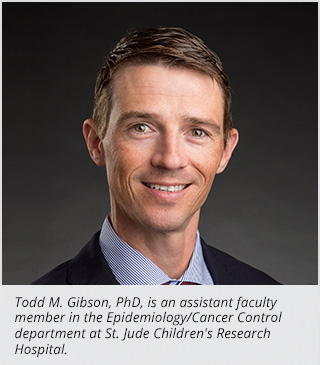High Blood Pressure in Adult Survivors of Childhood Cancer
More Americans are beating childhood cancer, but many experience effects later in life.

Childhood cancer has presented some of the greatest success stories in cancer research.
In the United States, death rates from childhood cancers have declined by 35 percent since 1990. About 83 percent of children who are diagnosed with cancer survive for at least five years, and many become long-term survivors. Today, an estimated 420,000 Americans are adult survivors of childhood cancer.
These survivors, however, are prone to a wide range of health problems, also known as “late effects.” Some of these include organ damage, cognitive deficits, psychosocial issues, infertility, and higher risk of second cancers. A study published recently in Cancer Epidemiology, Biomarkers & Prevention, a journal of the American Association for Cancer Research, showed that these survivors are also more likely to develop high blood pressure as adults than their peers who did not undergo cancer.
St. Jude Children’s Research Hospital in Memphis, Tennessee, runs the St. Jude Lifetime Cohort Study, which provides ongoing medical assessments of childhood cancer survivors to advance knowledge of their long-term health outcomes.
As part of the study, Todd M. Gibson, PhD, assistant faculty member in the Epidemiology/Cancer Control department at St. Jude, assessed blood pressure in 3,016 adult survivors of childhood cancer.
Participants were considered to have high blood pressure if their systolic blood pressure was 140 or greater, their diastolic blood pressure was 90 or greater, or if they had been previously diagnosed with hypertension and were taking antihypertensive medication.
The study showed that the prevalence of hypertension was 2.6 times higher among childhood cancer survivors than expected, based on age-, sex-, race- and body mass index-specific rates in the general population.
The prevalence of hypertension increased over time: At age 30, 13 percent of the survivors had hypertension; at 40, 37 percent had hypertension, and by age 50, more than 70 percent of the survivors had hypertension. Gibson said the prevalence of hypertension in cancer survivors matched rates in the general population of people about a decade older.
Certain groups of survivors were the most likely to have hypertension: men; non-Hispanic blacks, older survivors, and those who were overweight or obese, the study showed.

The study found that exposure to radiotherapy or chemotherapy were not significantly associated with hypertension. Dr. Gibson said this finding was surprising, and suggests that the connection between childhood cancer survival and adult hypertension is multifactorial and worthy of future research.
In the meantime, he said, clinicians should be mindful that survivors of childhood cancer are more likely than the general public to develop high blood pressure.
“The good news is that, unlike prior cancer therapy, high blood pressure is a modifiable risk factor,” Dr. Gibson noted. “Research is needed to identify effective interventions to prevent hypertension in survivors, but our results emphasize the importance of blood pressure surveillance and management.” He added that high blood pressure may have a more damaging effect on cancer survivors who were treated with cardiotoxic therapies such as anthracyclines or chest radiation.
Dr. Gibson said a limitation of the study is that it was based on blood pressure measurements that were taken at a single study visit. A clinical diagnosis of hypertension typically requires measurements taken at multiple intervals, he explained.
Also, the St. Jude Lifetime Cohort is a group of cancer survivors who undergo frequent clinical follow-up, so its participants may have benefited from being monitored and may, therefore, be in better health than survivors who have less comprehensive follow-up, Dr. Gibson added.
